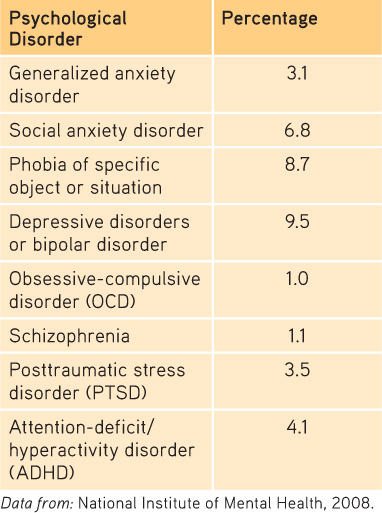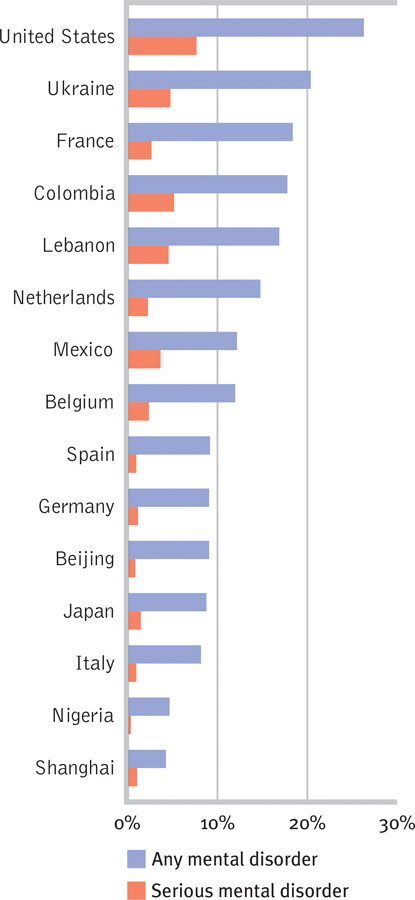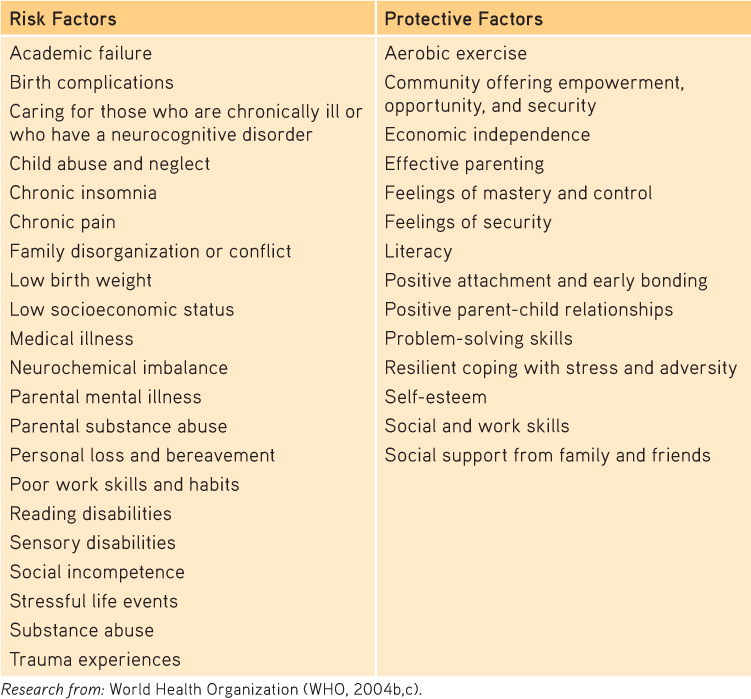49.4 Rates of Psychological Disorders
49-
Who is most vulnerable to psychological disorders? At what times of life? To answer such questions, various countries have conducted lengthy structured interviews with representative samples of thousands of their citizens. After asking hundreds of questions that probed for symptoms—
How many people have, or have had, a psychological disorder? More than most of us suppose:
- The U.S. National Institute of Mental Health (2008, based on Kessler et al., 2005) has estimated that just over 1 in 4 adult Americans “suffer from a diagnosable mental disorder in a given year” (TABLE 49.2).
 Table 49.2
Table 49.2
Percentage of Americans Reporting Selected Psychological Disorders in the Past Year

- A large-scale World Health Organization (2004a) study—based on 90-minute interviews of 60,463 people—estimated the number of prior-year mental disorders in 20 countries. As FIGURE 49.2 displays, the lowest rate of reported mental disorders was in Shanghai, the highest rate in the United States. Moreover, immigrants to the United States from Mexico, Africa, and Asia averaged better mental health than their U.S. counterparts with the same ethnic heritage (Breslau et al., 2007; Maldonado-
Molina et al., 2011). For example, compared with people who have recently immigrated from Mexico, Mexican- Americans born in the United States are at greater risk of mental disorder— a phenomenon known as the immigrant paradox (Schwartz et al., 2010).

 Figure 49.2
Figure 49.2Prior-
What increases vulnerability to mental disorders? As TABLE 49.3 indicates, there is a wide range of risk and protective factors for mental disorders. But one predictor of mental disorder, poverty, crosses ethnic and gender lines. The incidence of serious psychological disorders has been doubly high among those below the poverty line (CDC, 1992). Like so many other correlations, the poverty-
 Table 49.3
Table 49.3Risk and Protective Factors for Mental Disorders

At what times of life do disorders strike? Usually by early adulthood. “Over 75 percent of our sample with any disorder had experienced [their] first symptoms by age 24,” reported Lee Robins and Darrel Regier (1991, p. 331). Among the earliest to appear are the symptoms of antisocial personality disorder (median age 8) and of phobias (median age 10). Alcohol use disorder, obsessive-
RETRIEVAL PRACTICE
- What is the relationship between poverty and psychological disorders?
Poverty-